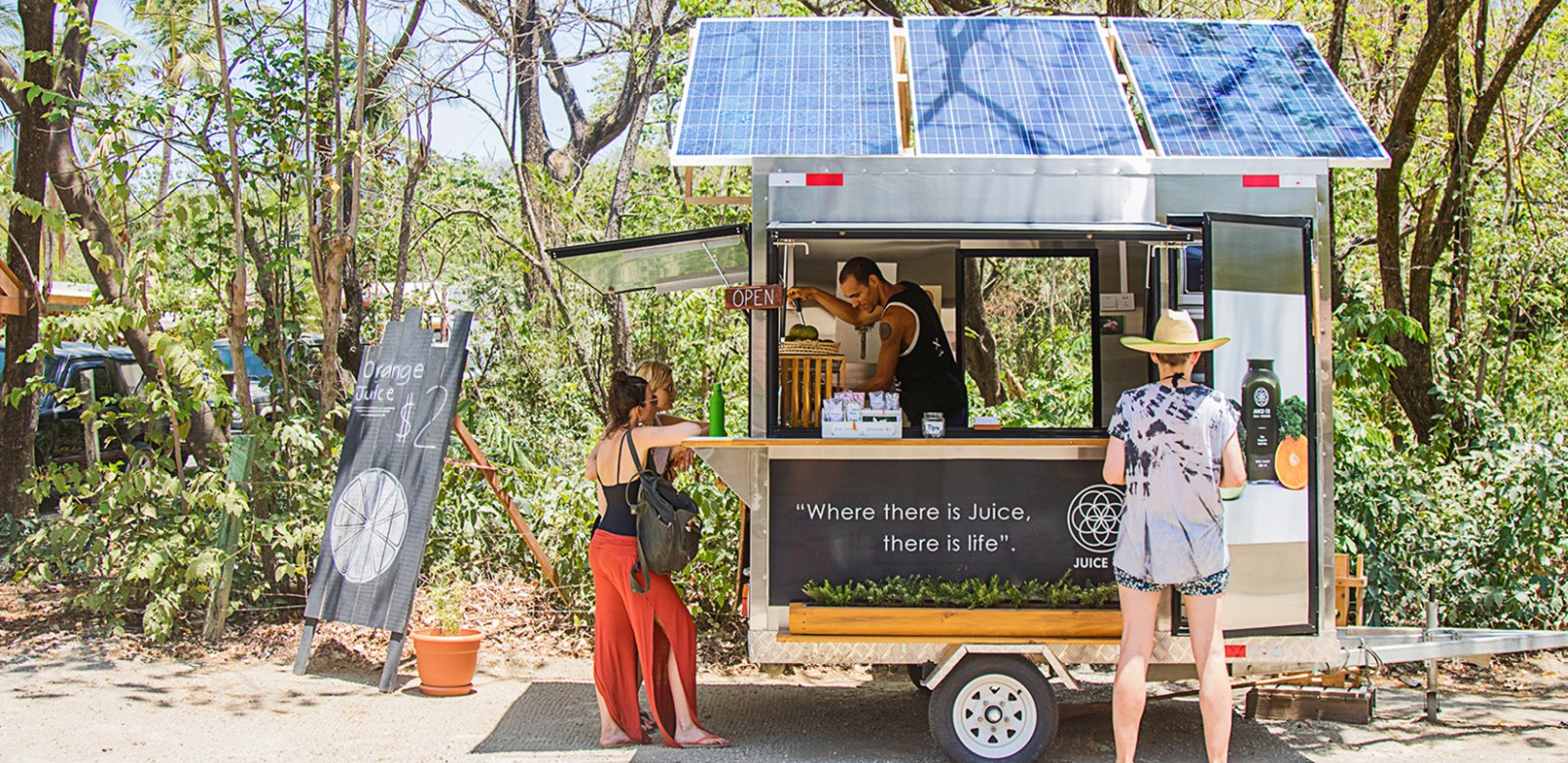
Who at some point has bought an ice cream from the men that pass by in front of houses with a cart, or has drank from a cold coconut sold by vendors going by on bicycles?
If you think back, the carts were basic: a fridge or basket mounted on a bike and it was ready to go. But now things have gotten more serious and thanks to technology and some people’s creativity, the bicycles have been replaced by trucks called food trucks.
Despite being tucked away in the jungle and surrounded by monkeys, Nosara has a variety of food trucks to offer. One of the first ones in Nosara was Go Juice, set up by American Nick Fairman in November of 2014.
“It has a certain stigma that it is cool and trendy and that people should come here to drink juice in the middle of the jungle of Costa Rica. They can’t believe it,” says Fairman.

GoJuice rent a private property with municipal permits.
The juice stand has a bathroom for employees and customers. It is hooked up to electricity through a meter and has water too. The truck has a refrigerator, a freezer, a sink, a juicer and a blender and involved an investment of two million colones (about $3,800).
Another one that entices consumers is JuiceCr, located across from Hotel Harmony as of two and a half months ago. The project started when the owners, Manuel Quiros, Andres Araya and Tziru Perez, were looking for a financial activity since work opportunities are currently complicated.
The owners wanted the food truck to have a design that would have little environmental impact, use little electricity and generate little waste.
For electricity, the juice stand has three solar panels that generate a current of 12 volts for the batteries that then supply the electrical devices like the fridge and the water pump. The fridge is 12 volts, similar to the power required by a car’s cigarette lighter. The pump can handle up to 50 liters of water.
They bought the infrastructure in Shanghai, China, at a cost of $12,000, since it cost almost twice as much in the United States.
In addition, an increase in this type of business is expected in the Guiones Beach area, specifically in the lot adjoining Al Chile restaurant, as part of the expansion of Hotel Harmony.
Tamarindo has also joined in the food truck trend. For example, there is Eat My Taco, which has its established place in the farmers’ market every Saturday, although they can also be seen during the week in different parts of town, like next to the library.
Another example is Perfect Burger, which is run out of one of those VW vans that we used to see in surf movies from the 70s. According to customer reviews on TripAdvisor, the name is right on with the perfect burger.
Are They Legal?
Despite being a global trend, food trucks are currently fighting against local laws, just like what has happened with Uber.
For a food truck to operate under the regulation, it must operate from a private property and apply for a land use permit from the Municipality, as in the case of Go Juice. However, part of the appeal of these vehicles is that they can move around to different areas.
According to Christian Soto, from the permits department of the Municipality of Nicoya, food trucks are classified as street vendors. However, in the case of cantons that have an internal permit regulation, the rule could be modified so that food trucks can apply for a permit.
Also, like any commercial business, food trucks also have to meet the standards of the Ministry of Health.







Comments